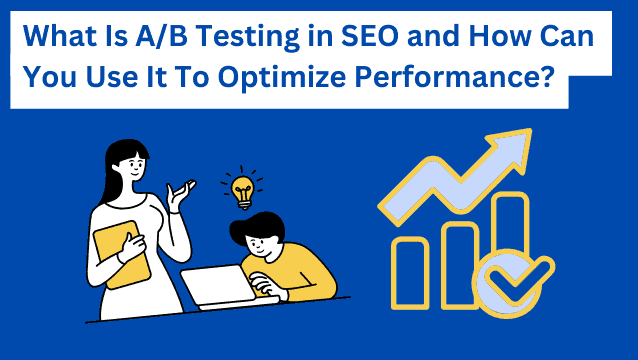You’ve optimized your content, earned the rankings, and traffic is flowing. But what happens next?
For SEO-focused marketers, email marketing isn’t a follow-up channel. It’s a core part of the content lifecycle. Through email marketing and marketing automation, you can distribute new articles and re-engage readers. And turn organic traffic into long-term subscribers.
Tools like Mailchimp make that automation simple. But here’s the catch: Mailchimp isn’t built for that strategy. For that, you need alternative tools.
In this post, we’ll explore the top Mailchimp alternatives for SEO experts, content marketers, and teams focused on organic growth. These tools give you more control and better audience targeting.
Highlights
- Mailchimp isn’t ideal for SEO-focused marketers — its rising costs, inconsistent deliverability, and limited automation features make it less effective for content distribution and audience nurturing.
- Email tools that integrate with SEO strategies—like Moosend, Constant Contact, ActiveCampaign, Brevo, and MailerLite—offer better automation, personalization, and analytics to convert organic traffic into loyal subscribers.
- RSS automation is critical for scaling blog content distribution, ensuring new articles reach subscribers automatically, and keeping SEO-driven audiences engaged.
- Advanced segmentation, personalization, and A/B testing enable marketers to tailor email campaigns by topic, behavior, and entry source—driving higher engagement and conversions.
- Choosing the right pricing model matters—contact-based plans (like Moosend or MailerLite) suit frequent senders, while email-volume plans (like Brevo) benefit large but less active lists.
Why consider Mailchimp alternatives?
Mailchimp is one of the most recognized names in the email marketing industry. But despite its popularity, its pricing structure and sometimes poor performance are two of the main reasons email marketers are looking for an alternative (Source: Email Vendor Selection).

But let’s get more specific about the reasons you need a Mailchimp alternative:
The cost
Mailchimp might offer a free email marketing plan, but it comes with many limitations, such as no automation workflows and customer service only for the first 30 days.
Prices might start at $13 for your monthly emails, but most advanced features are hidden behind a paywall. If you manage multiple lists or segmented campaigns, Mailchimp’s pricing can scale poorly compared with alternatives that offer more generous limits or different pricing models.

Regular pricing changes
Mailchimp’s pricing has changed significantly over the years, with users reporting that these changes broke their trust and didn’t add any value to their plans (Source: SendX). At this moment, the pricing plans show that the bigger your email list, the higher the price.

Email deliverability issues
According to EmailToolTester’s report, Mailchimp’s deliverability reached 89.5% as of January 2024, with variation across providers. Mailchimp’s reported deliverability in their public tests has been in the high 80s to low 90s percent range in recent comparative rounds. Independent deliverability tests show differences between providers.
These differences affect inbox placement. If deliverability is a priority (it should be), choose a provider with a consistent track record and clear deliverability features. Mailchimp has a dedicated email deliverability team that’s only available on higher tiers. Its delivery infrastructure covers only the basics.
Poor customer support
Users report that Mailchimp’s customer support is lacking, as it is slow (Source: Trustpilot).

It is also available only in higher pricing tiers.
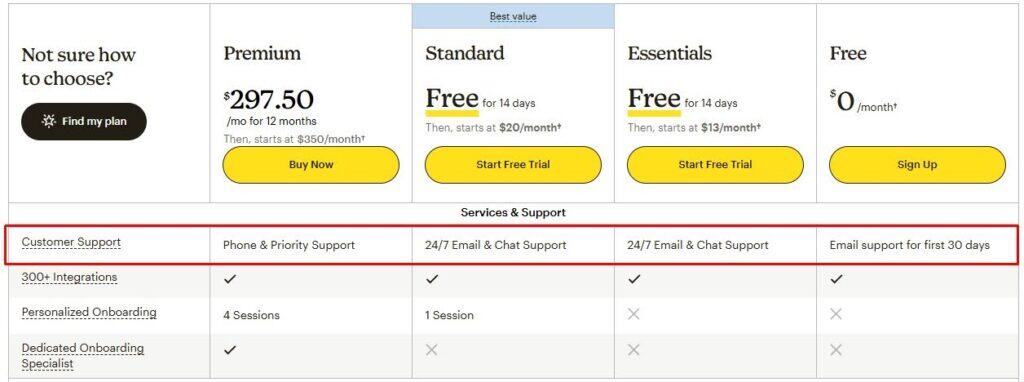
Finally, it’s not multilingual support. International teams could benefit from a multilingual team.
What SEO-focused marketers need from an email tool
If you’re serious about SEO, you know that getting the click is only the beginning. The real value comes from what happens next. This keeps visitors engaged and builds lasting audience relationships. That’s where email marketing comes in. But not any platform will do.
Here’s a short checklist to use when you evaluate tools:
- RSS campaign capabilities for blog content distribution: Can the tool auto-send new posts by tag/category?
- Automation workflows: Can you build behavior-driven funnels?
- Advanced segmentation and personalization: Can you segment by entry page, content interest, or referral source?
- Deliverability and reputation tools: Dedicated IPs, domain authentication, and deliverability teams.
- Pricing model that scales with your usage: How many monthly emails do you send? Do you need unlimited emails?
- Analytics that tie email engagement back to site behavior.
RSS campaign capabilities for blog content distribution
When your content calendar is on track, you need an email tool. It should automatically send your latest blog posts to your audience. RSS email campaigns save time and ensure your subscribers never miss a new article. Not to mention that, since they’re automated, they build trust in your content. After all, workflow automation tools (e.g., Zapier and Asana) ensure nothing falls between the cracks. That way, you can truly capitalize on the traffic you’ve worked so hard to earn.

RSS automation workflows are perfect for scaling content distribution without manual effort. Find email newsletter tools that let you customize email templates. See if you can set how often schedules run. Also, check which categories or tags you can include.
A/B testing for content headlines, CTAs, and body copy
As an SEO professional, you obsess over headlines, CTAs, and conversion points. So, your email marketing platform should, too.
Mailchimp, Moosend, Constant Contact, and other email newsletter tools offer A/B testing. This lets you test email components such as subject lines, preview texts, sender names, and body copy. You can find out what boosts clicks and engagement.
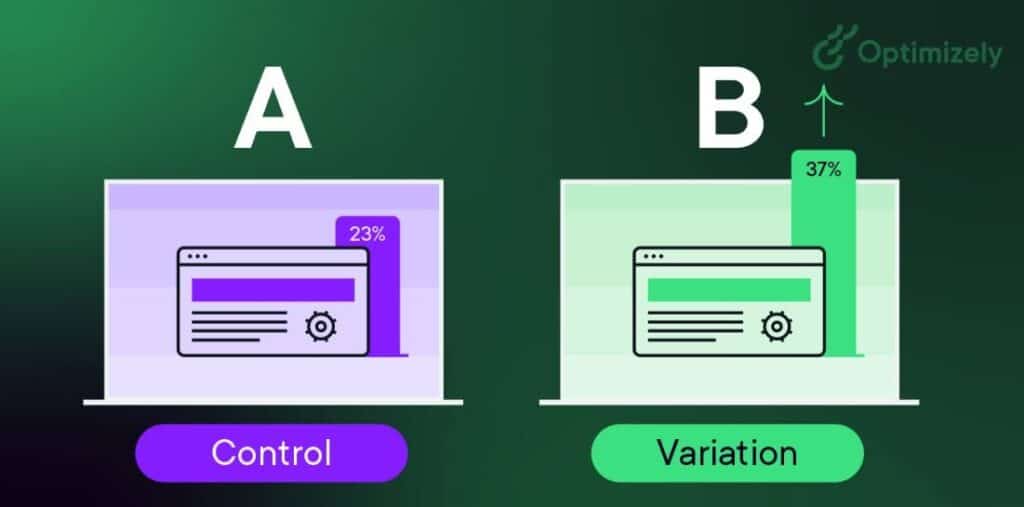
A/B testing helps improve your messaging. You can use insights from your testing to enhance your on-site content strategy and further engage your email list.
Advanced segmentation and personalization
Not all subscribers are the same. And treating them like they are kills engagement. You need detailed audience segmentation tools. These let you tag users according to their behavior, content interests, or traffic source.
The segmentation playbook for a content site could:
- Use behavioral triggers to send follow-ups (e.g., when a visitor clicks on landing page CTA but doesn’t convert)
- Create a “recent visitor” segment for people who clicked a blog post in the last 30 days
- Tag subscribers by lead magnet or blog category
Analytics that matter
Open rates are nice, but they’re no longer the only metric to track in email marketing. Focus on tools that give you deeper insights without needing additional platforms or extra tools.
Want to know who’s engaging with your email campaigns all the way through? Look for platforms that track:
- Total clicks
- Unique clicks
- Device interactions
- Behavior changes over time
Also, combine email metrics with data from your website. Are readers converting or bouncing? The more actionable the data is, the more you can iterate and improve.
Scalability and pricing that match growth
As your blog’s content strategy becomes more elaborate, your traffic and email list will grow. That shouldn’t mean getting punished with sky-high pricing tiers or strict limitations for your monthly emails and the extra tools you may need.
Some tools charge by the number of contacts. Others by email volume. Choose the model that aligns with how you engage your list. Check for platforms that offer flexible pricing. This is important if you manage multiple newsletters or segmented campaigns.
Bonus points if the tool has generous sending limits (or, even better, unlimited emails). It should provide a pricing structure that grows with your needs. This includes factors such as subscriber count, monthly email volume, and campaign frequency.
The best Mailchimp alternatives for 2025
Not every email platform is designed for SEO-focused marketers. Now that we’ve outlined their needs, it’s clear.
If Mailchimp isn’t working for you, maybe because of costs, email automation limits, a lack of customer support, or flexibility issues, it’s time to look for better options.
Here are the best Mailchimp alternatives. They offer smarter marketing automation. Their user interface is easy to learn. They provide better tools for email campaigns and strong analytics. Their features can really enhance your content strategy.
A quick comparison table
| Tool | Best for | RSS campaigns | Free plan/Trial | Pricing model | Standout for SEO teams |
| Moosend | SMBs, budget-first teams | Yes (automated) | Free 30-day trial | Unique subscriber-based | Affordable automation and RSS |
| Constant Contact | SMBs, agencies that hold events | Yes (manual/limited) | Free 14-day trial | Contact-based, has monthly sending limits | Event features and an easy user interface |
| ActiveCampaign | Full-funnel SEO teams | Yes | Free 14-day trial | Contact-based, tiered. Starts higher | Advanced automation and CRM |
| Brevo | Cost- conscious teams | Yes | Free plan | Email volume-based | Free plan with daily limit. Good for large lists with light sending |
| MailerLite | Agencies that favor simplicity | Yes | Free plan | Contact-based, affordable | Clean user interface and helpful analytics. |
Now, let’s see the Mailchimp alternatives worth SEO agencies’ and content teams’ consideration.
1. Moosend
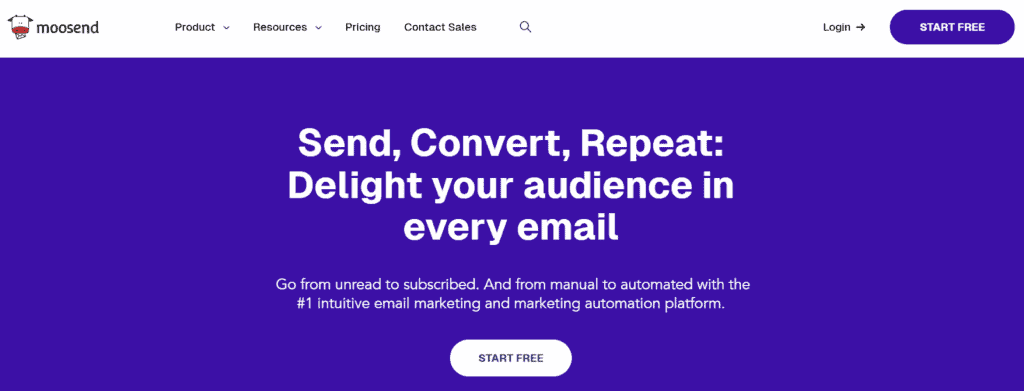
Best For: SMBs, entrepreneurs, content-focused businesses, and agencies that want powerful automation on a budget
Moosend is one of the most budget-friendly email marketing services. It’s great for SEO professionals and content teams who need affordable tools for email marketing, newsletters, automation, content sharing, and list growth.
At its core, Moosend is built for efficiency. Its user interface is smooth and intuitive. It provides RSS email templates. This makes it simple to automatically send blog updates to subscribers through your monthly automated emails. It’s an essential feature for content-heavy strategies.
Marketing automation makes investing in Moosend worthwhile. You can create automation workflows that react to user actions. Follow-ups can happen when someone clicks a link, submits a form, or interacts with certain emails or landing page buttons.
Moosend supports A/B testing. The built-in A/B testing tool can work for subject lines, body copy, and sender names. Its AI writer lets copywriters experiment with messaging, headlines, and CTAs right in the email. The platform has a modern, clean interface and a no-code email builder. This makes it easy for all teams to use, even those without an email expert.
Moosend offers enterprise-level features for your email marketing campaigns at SMB prices. This makes it perfect for growing lists and scaling content promotion without overspending.
Pros
- Email builder with drag-and-drop functionality that doesn’t require any knowledge of HTML
- Visual automation workflow builder with robust trigger-condition-action logic
- Affordable pricing with features typically found in higher-tier tools
- Strong email deliverability and GDPR compliance baked in
- A/B testing for subject lines, body copy, and sender name
- RSS campaigns for automated blog content distribution
- Clean, modern UI with a short learning curve
- Transactional email functionality
Cons
- No built-in Customer Relationship Management system (CRM)
- Fewer native integrations compared to larger platforms
Pricing
Moosend’s prices start at $9/month for the Pro plan, which includes most of the platform for your monthly emails. It also offers a generous 30-day trial to make sure it’s a good fit for your company. Its pricing model is unique, subscriber-based. Each subscriber counts as one contact, regardless of how many lists they are on. It also offers unlimited email sends.
2. Constant Contact

Best For: Small businesses venturing into content marketing, marketing teams running events, webinars, or workshops.
Constant Contact is more than an email platform. It’s a special tool for teams that combine content marketing, email marketing, and event-driven campaigns.
If your SEO plan extends beyond email marketing and requires additional tools for webinars, workshops, or a community, Constant Contact is a great choice.
For daily email tasks, it covers the basics: A/B testing for subject lines and a user-friendly, no-code email builder. Constant Contact also provides an RSS email campaign functionality. Yet, it is not through marketing automation, as it has to be done manually each time.
Its email automation and segmentation features are easy to use. They effectively support teams focused on regular content updates and growing their email lists. Its extra tools focused on event management are where the platform truly shines. You can:
- Create event landing pages
- Send branded invites
- Track registrations
- Manage ticketing
Constant Contact is a great option for SEO professionals who host webinars or local SEO workshops. It streamlines your tech setup. It works as an email marketing platform and an event management tool. This saves you money by removing the need for online platforms to manage RSVPs.
Pros
- User-based customer support through the user community functionality
- Event management features (landing pages, invites, ticketing)
- Easy-to-use user interface, good for small teams
- Great analytics and email deliverability
- Built-in A/B test
Cons
- Fewer advanced email automation options if you opt for the lower pricing tier
- Limited segmentation on the Lite plan
- A/B testing is limited to subject lines
Pricing
Constant Contact’s prices start at $12/month for the Lite plan that covers 500 contacts. Its free trial lasts 14 days and lets you thoroughly test the platform before making a decision. There is no unlimited email sends option.
3. ActiveCampaign
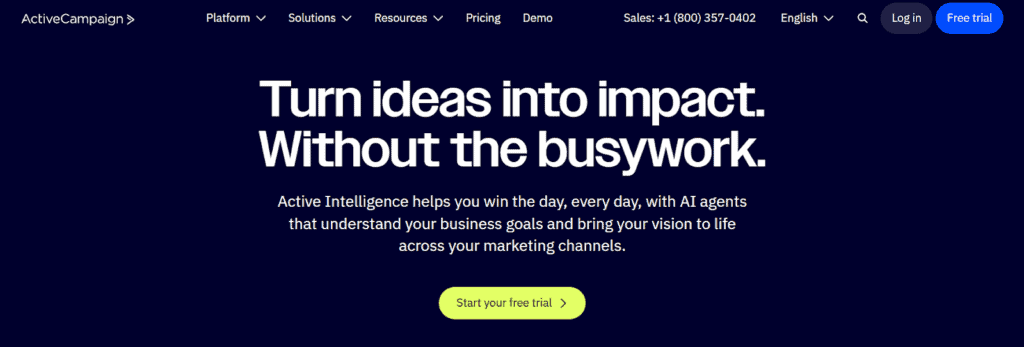
Best For: SEO teams who want deep automation, personalized content delivery, and full-funnel visibility
ActiveCampaign helps you scale your SEO strategy. It goes beyond just publishing blog posts. You can nurture, convert, and retain customers effectively. Its strong automations, easy-to-use CRM software, and excellent segmentation make it perfect for SEO teams that see content as a pipeline, not just traffic.
One standout feature for content marketers is conditional content. This allows you to change parts of your email marketing newsletters based on user tags, behavior, or source.
For SEO teams, this means you can create email campaigns with personalized newsletters for your email list. Tailor them to what users are reading, how they found you, or which lead magnet they chose. For example, a person who viewed your “local SEO guide” will see different CTAs and blog suggestions than someone who visited a landing page and downloaded your “enterprise link building checklist.” Both can come from the same monthly email campaign.
ActiveCampaign offers advanced email marketing automation. It also provides behavioral tracking and CRM features. This gives you a powerful platform. It helps SEO agencies deliver the right content to the right reader at the right time.
Pros
- Advanced email marketing automations with triggers, actions, and goals, powered by an AI assistant
- Granular segmentation for personalized email marketing at scale
- Built-in CRM for lead tracking, scoring, and profile enrichment
- Multilingual customer support
- Site and event tracking
- Powerful integrations
Cons
- Steep learning curve with a non-intuitive user interface, especially for small teams
- Functional but less polished email builder
- Pricing scales quickly
Pricing
ActiveCampaign’s pricing is split between email marketing, WhatsApp, and a combination plan. Its prices for the email option start at $15/month, while the combination plan starts at $368/month. The platform offers a 14-day free trial. ActiveCampaign’s pricing is tiered by features (Starter, Plus, Professional, and Enterprise) and scales with the number of contacts. Expect higher starting prices than those of other Mailchimp competitors.
4. Brevo
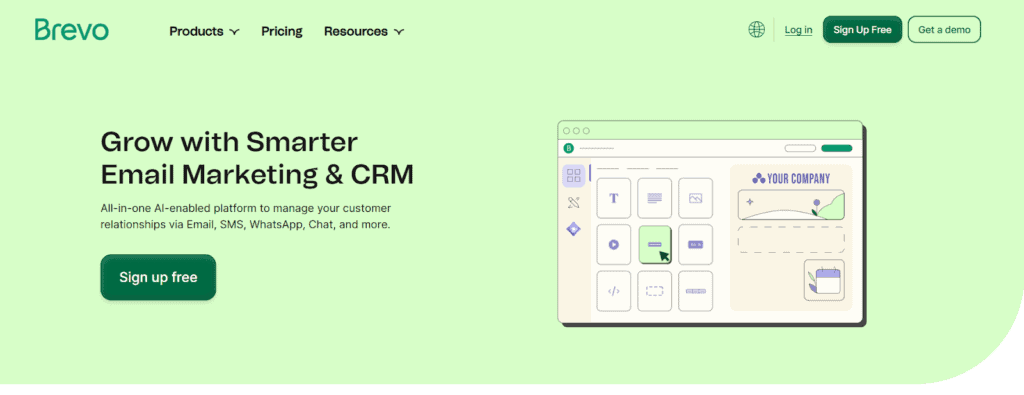
Best For: SEO teams and content marketers who want dependable automation and blog distribution tools at a low cost.
Brevo combines email marketing automation with scalability. It also offers flexible pricing. It’s a great choice for SEO pros managing email marketing on a budget.
The platform meets all key needs. It includes RSS campaigns and marketing automation. These are key to automatically sharing blog content when it goes live. Its email builder is intuitive and smooth. However, it lacks essential engagement features, such as countdown timers.
Brevo’s visual automation builder is easy to use. You can create workflows based on user actions, such as link clicks, page visits, and form fills. This helps guide organic traffic down the funnel after the first blog click. You won’t need complex setups or extra tools for your monthly emails.
Brevo’s A/B testing is limited to subject lines. Still, this feature helps teams test open rates and improve messaging over time. However, if you’re looking for more advanced testing options like content or timing variations, you’ll likely find Brevo somewhat restrictive.
Pricing depends on email volume, not email list size, and doesn’t offer unlimited email sends. This suits high-traffic websites with big but irregularly engaged audiences. This pricing model allows users to better manage their resources and allocate their marketing budget more effectively.
Brevo is a great email marketing tool for SEO agencies and content teams. It’s functional and affordable. If you need to share content with different email list segments, Brevo is a great option. It offers basic email automation at a lower cost.
Pros
- Affordable pricing, especially for large email lists with light sending needs
- Multichannel marketing tools (Wallet, SMS, Web, and mobile push)
- Visual automation builder for setting up post-click workflows
- Solid email deliverability, GDPR-compliant
- RSS campaigns for content distribution
Cons
- Email builder lacks engagement elements (i.e., countdown timers)
- Users report that the editor and user interface feel outdated
- A/B testing is limited to subject lines
Pricing
Brevo has four pricing categories:
- Customer data platform
- Conversations platform
- Marketing platform
- Sales platform
As for the marketing platform, prices start at $8/month. Brevo also offers a free plan that covers 300 emails per day and transactional email options.
5. MailerLite
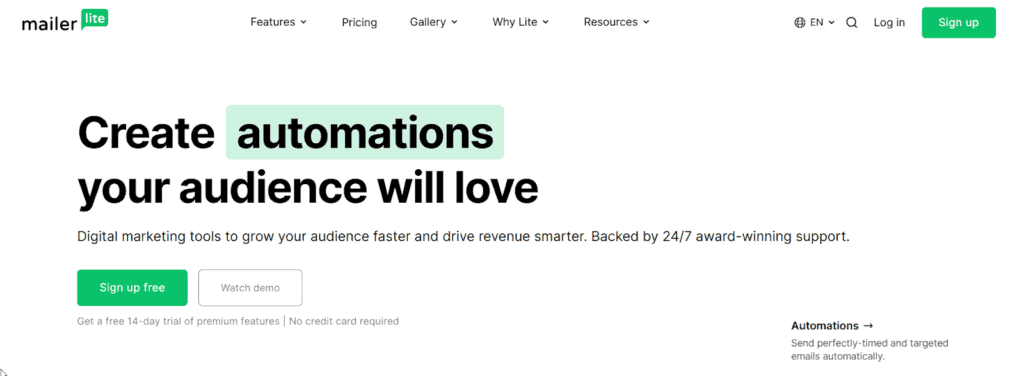
Best For: Small SEO teams who need simplicity.
MailerLite offers easy design and key email marketing capabilities. This makes it a favorite for smaller SEO agencies and content teams.
The platform provides RSS emails and an easy drag-and-drop builder. This makes it simple to share new blog posts or newsletter content, even if you lack design skills. You can also A/B test subject lines with AI-powered subject line and content suggestions.
MailerLite offers helpful visual reports for email marketing campaigns through its intuitive analytics user interface. These include key metrics such as opens, clicks, bounces, unsubscribes, and engagement by device and email client.
You can also track user engagement, view opens by geolocation, and drill down metrics to link-level clicks. This is ideal for SEO teams monitoring reader behavior post-click to optimize their SEO services.
MailerLite offers useful analytics. However, it does not have multi-channel attribution or account-wide insights. This makes it harder to track the entire content funnel.
Pros
- RSS campaigns keep your subscribers in the loop and your SEO agency running
- Improved user interface, which is great for beginners
- A/B testing and AI-powered subject line suggestions
- No-code email builder, ideal for non-designers
- Actionable email marketing analytics
Cons
- Fewer native integrations compared to some competitors
- Customer support is restricted for users on the free plan
Pricing
MailerLite’s pricing is split between two categories:
- The transactional category. It includes transactional email, SMS, and inbound routing, and pricing starts at $28/month. This option also comes with a free plan.
- The marketing category. It includes email marketing, audience segmentation, and automation, and its prices start at $9, with a free plan.
Pick an email platform that works just as hard as your SEO strategy
Your email marketing platform shouldn’t just send newsletters. It should amplify the value of your SEO work.
Using the right tool boosts your ROI. It helps you distribute high-ranking blog content, promotes lead magnets and landing pages, and builds relationships through link-building email outreach.
A good email tool with an easy-to-use user interface helps your email campaigns reach the right audience. It tests and improves your CTAs and offers solid customer support when you need it.
Make your choice with ease of use in mind. Integration, analytics, and adaptability are key to an email marketing platform that launches your agency into the future.
To stay informed on business tools, trends, and insights, check out Codeless’ blog.
FAQs
Let’s look at the most common questions about switching from Mailchimp to another email tool.
What is the best free Mailchimp alternative?
For large stored contact lists with light sending, Brevo’s free plan is a great option (daily send limits apply). For small lists and simple automation, MailerLite’s free and Moosend’s low-cost tier are solid choices.
Which alternative has the best deliverability?
Deliverability varies by provider and depends on your sending practices. Independent tests such as EmailToolTester’s deliverability roundups are a good reference point. Review the most recent test results and the provider’s deliverability tooling (authentication, dedicated IPs).
Should I choose an email tool that charges by contacts or by email volume?
If you have a very large list and send infrequently, an email-volume model (e.g., Brevo) can be cheaper. If you send frequently to a smaller, engaged list, contact-based pricing (Moosend, MailerLite) may be more predictable.
How do I migrate from Mailchimp?
Most platforms provide import tools to migrate contacts, campaigns, and templates. Plan the migration: export lists, export any tags/segments, save templates, and test deliverability from the new platform before switching. Also, make sure the platforms integrate with popular add-ons like Google Sheets.
